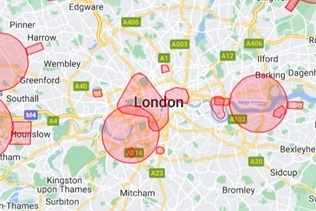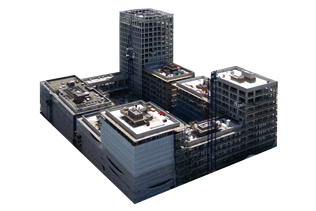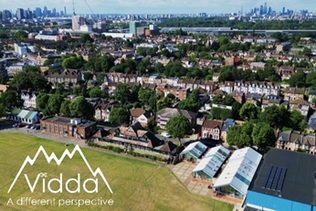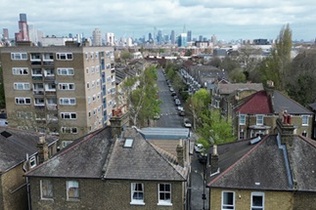From Render to Reality: Integrating Architectural Plans with Drone Construction Images

School construction: Render merged with real-world image
Updated 1st March 2025, by Jack
Introduction
Marketing a construction company effectively is challenging, trying to make content that stands out online or on social means you often only have a few seconds to grab a potential client’s attention before they scroll past. You may have showcased high-quality images of completed projects or used time-lapse footage to highlight construction phases, but the internet is already saturated with these ideas. One powerful yet often overlooked strategy is combining drone progress photography with architectural renders. This technique catches attention and provides reassurance to potential clients by visually connecting the project’s initial plans with its real-world progress and completion.
Why Use Architectural Renders & Drone Photography for Construction Marketing?
Put yourself in the customer’s shoes—whether they’re working with a large or small construction company, the project is often a significant investment for them and they seek reassurance. While finished project images and time-lapse videos showcase workmanship, they don’t always demonstrate that the final product matches the original vision. How do they know there were no unexpected design changes or cost overruns along the way?
This is where combining architectural renders with drone progress videography can be highly effective. Many clients already have their own architectural drawings and seeing an example of how you have brought plans to life builds confidence in your ability to deliver as promised - not only have you completed a great building, but it is also exactly as the architect and customer envisaged it. As well as being compelling marketing content, drone footage taken along the way can be combined with renders for precise progress tracking and stakeholder updates to reaffirm to your client that everything is going as planned.
How to Plan Effective Drone Progress Photography & Render Integration
To create compelling content, planning is essential. Start by reviewing available renders and determining which shots can be recreated, using Google Earth can help check for obstacles. Decide on the best times to capture images, whether for a final showcase or a series of before, during, and after shots. Ideally, planning would begin at the start of the project collaborating with the architect if possible, however available render angles can be matched at the end of the project too.
Equipment Considerations:
- Handheld cameras limit you to ground-level recreations only.
- Drones provide aerial views and top-down perspectives for plan overlays.
- Time-lapse cameras could be positioned to match the render from the start.
Capturing Drone Footage to Match Architectural Renders
When capturing video or photographs, have a copy of the render or plan on hand. Check your angles before and after shooting to ensure alignment. While minor adjustments can be made during editing, incorrect angles can lead to distorted or misaligned results. If unsure on the angle, filming whilst repositioning the camera can help—you can then create a video still later.
Key Tips for Capturing Accurate Drone Footage:
- Ensure the drone is positioned at the correct height and angle to match the render.
- Consider weather conditions that may affect visibility and lighting.
- Capture images in high resolution with extra space around the subject to allow for cropping and adjustments in post-production.
Editing Drone Footage & Renders for Maximum Impact
Once you have captured the necessary footage, it’s time to create the engaging content. Compare the render and the real-life image side by side to ensure proper alignment. Differences can be corrected by zooming, cropping, or rotating the image. If slight persepctive differences exist, adjust the pitch and yaw of the render rather than distorting elements in the real-life image, which can look unnatural.
Editing to Combine Render and Real-World Image:
- Once aligned, crop photos at aesthetic angles and overlay them.
- For videos, apply linear or edge wipe transitions to smoothly show transformation.
- For top-down plan overlays, remove the plan’s background and use transparency overlays to blend it into the real-world image.
Real-Life Application: Drone Progress Updates for School Construction
Since groundwork began on a school construction project in London, we have used aerial drone videography to track monthly progress on the site. This footage is combined with architect render videos and photos (above) to present to the Department for Education. The video updates that merge renders into an aerial time lapse have been very well received, with the client receiving full transparency over the progress of the project.
Conclusion
Integrating drone progress photography with architectural renders can significantly enhance your construction marketing strategy. This approach grabs potential clients' attention and reassures them that you can deliver their project as planned. Proper planning, accurate angle recreation, and precise editing will help create stunning visuals that set your business apart.
We hope this guide has inspired new construction marketing ideas. At Vidda, we specialise in drone construction progress photography, construction project completion filming, and aerial time-lapse videography. If you have any questions or would like help obtaining or editing your footage, please contact us using the details below.



